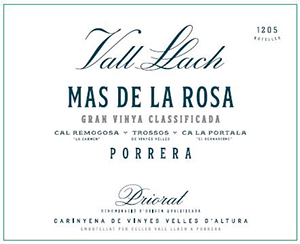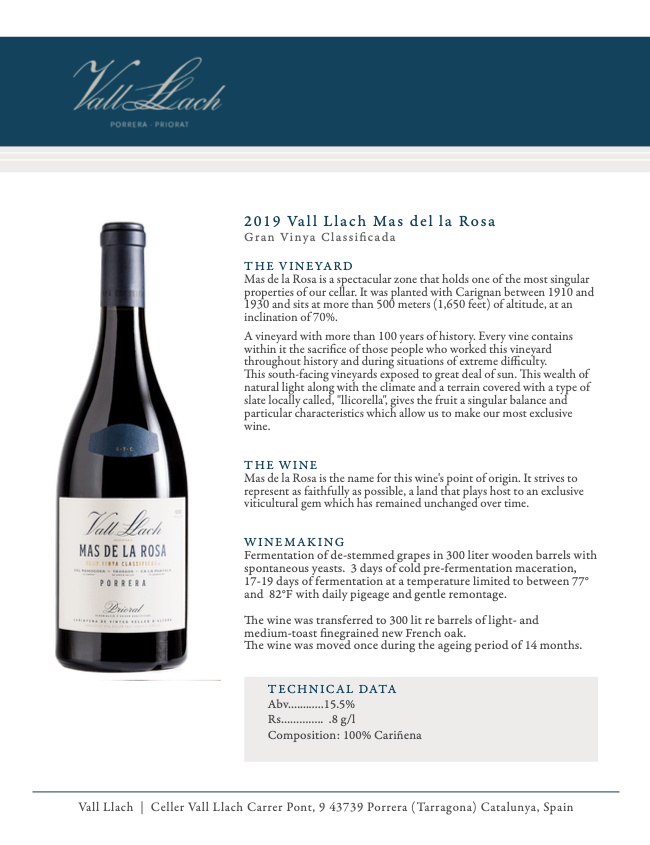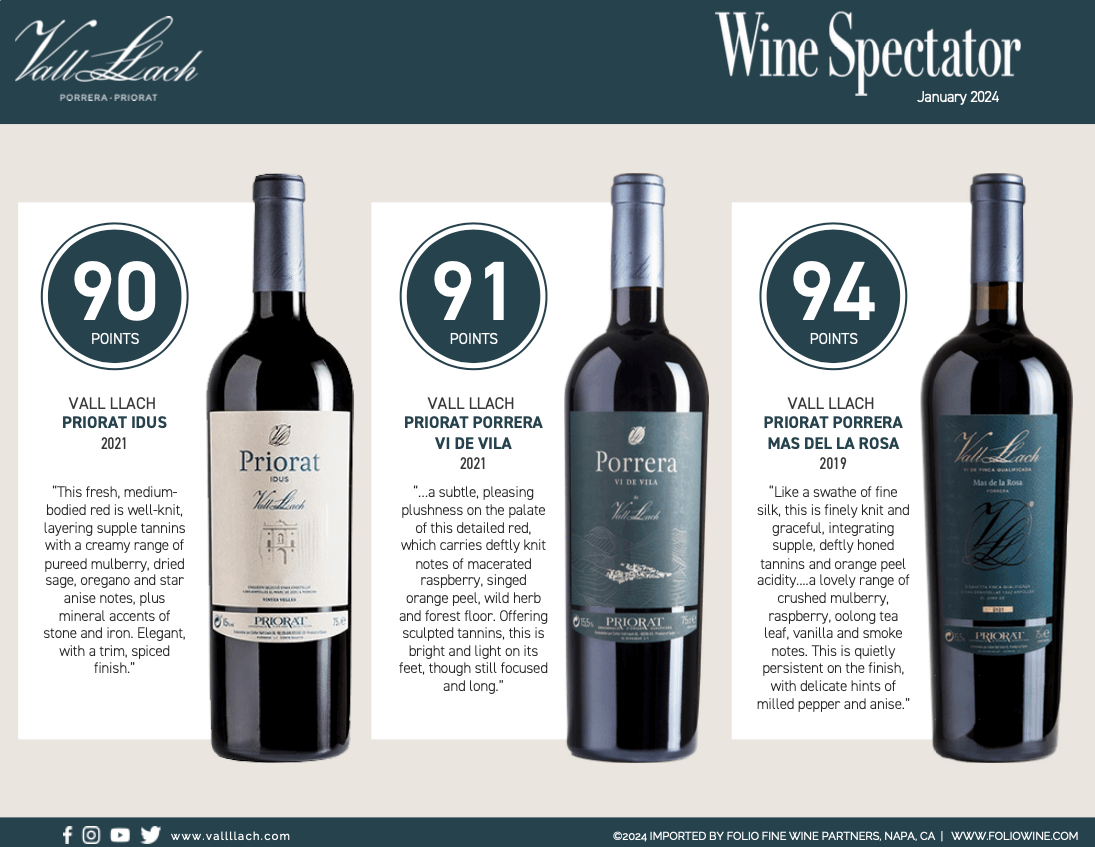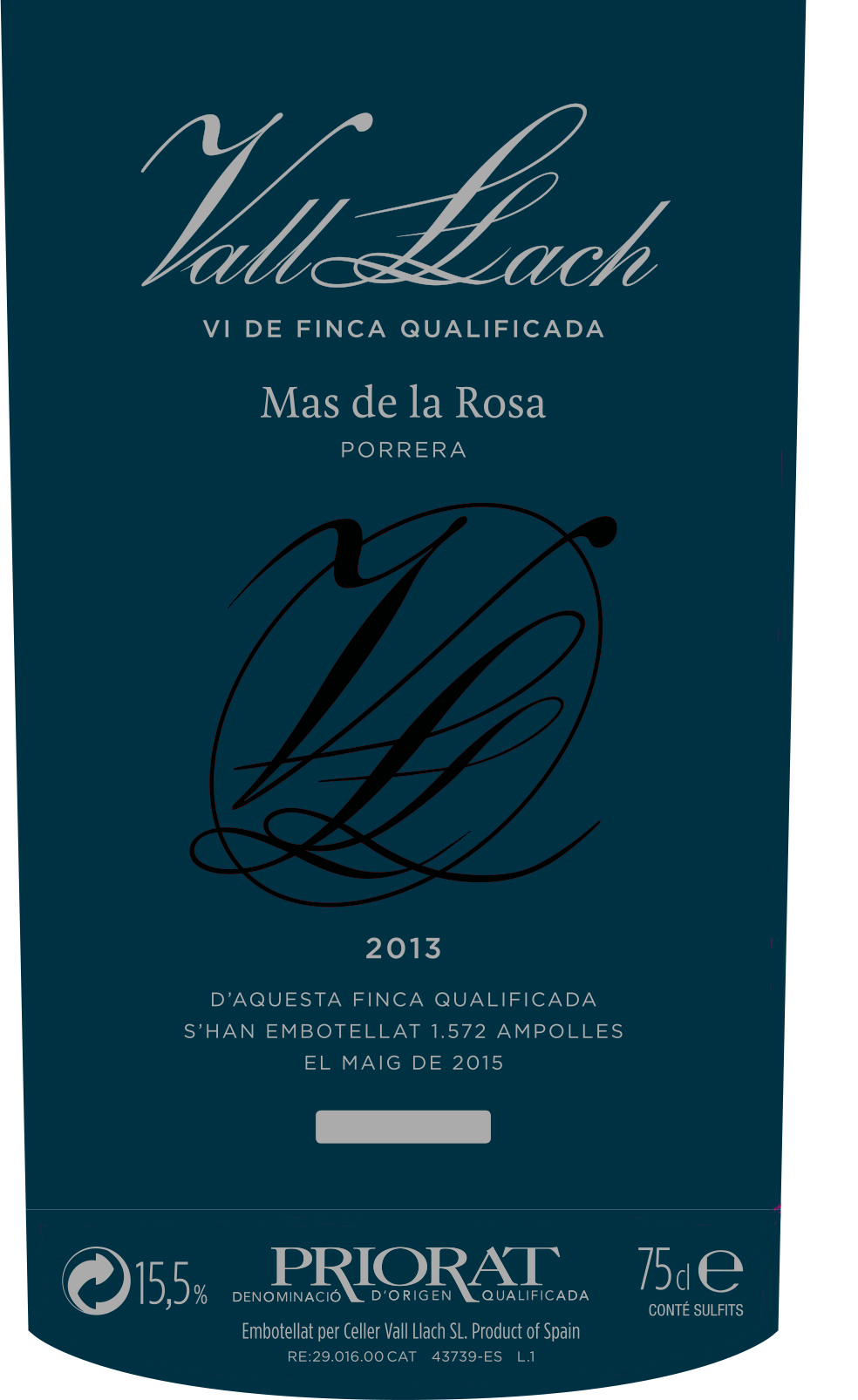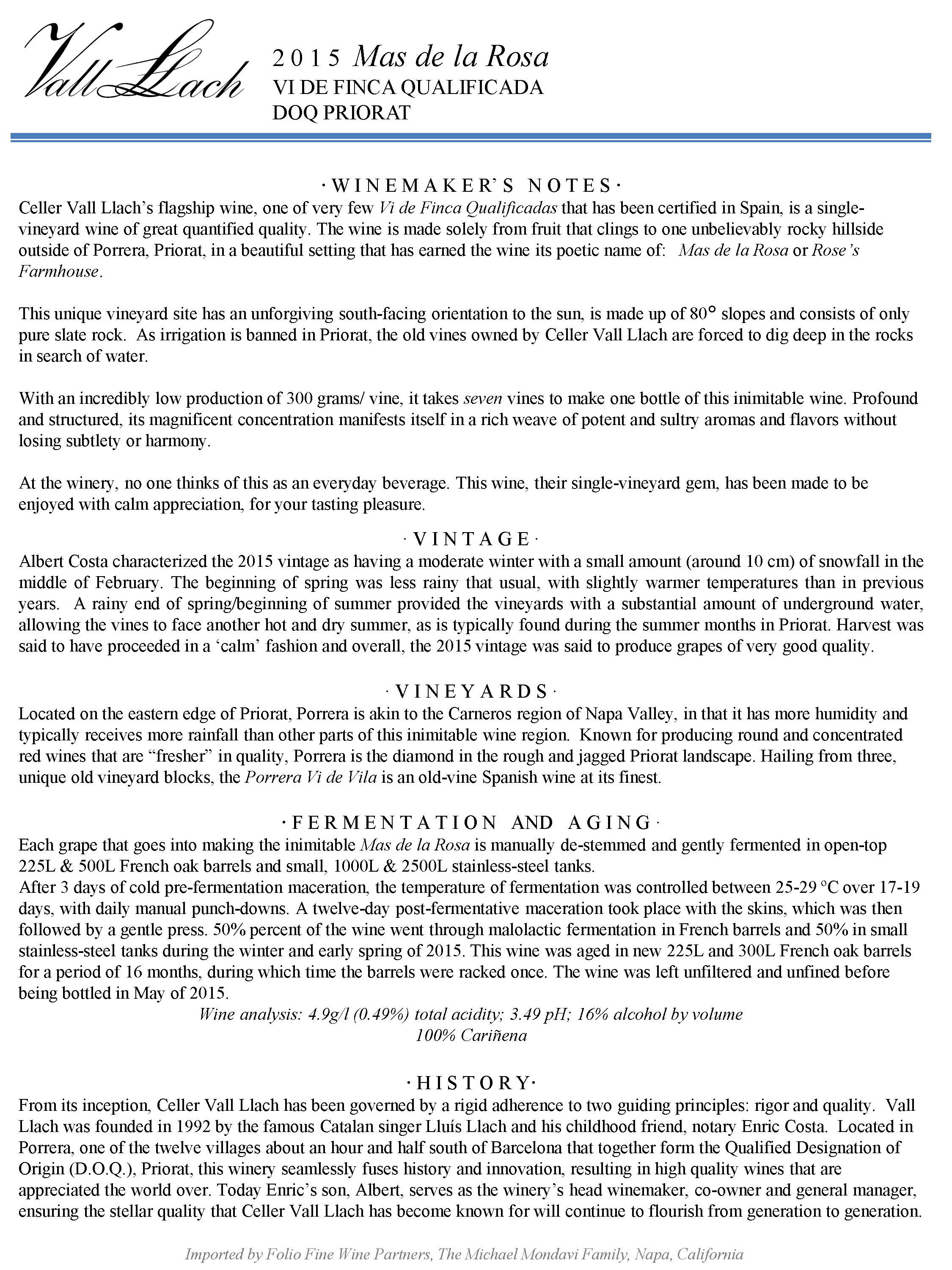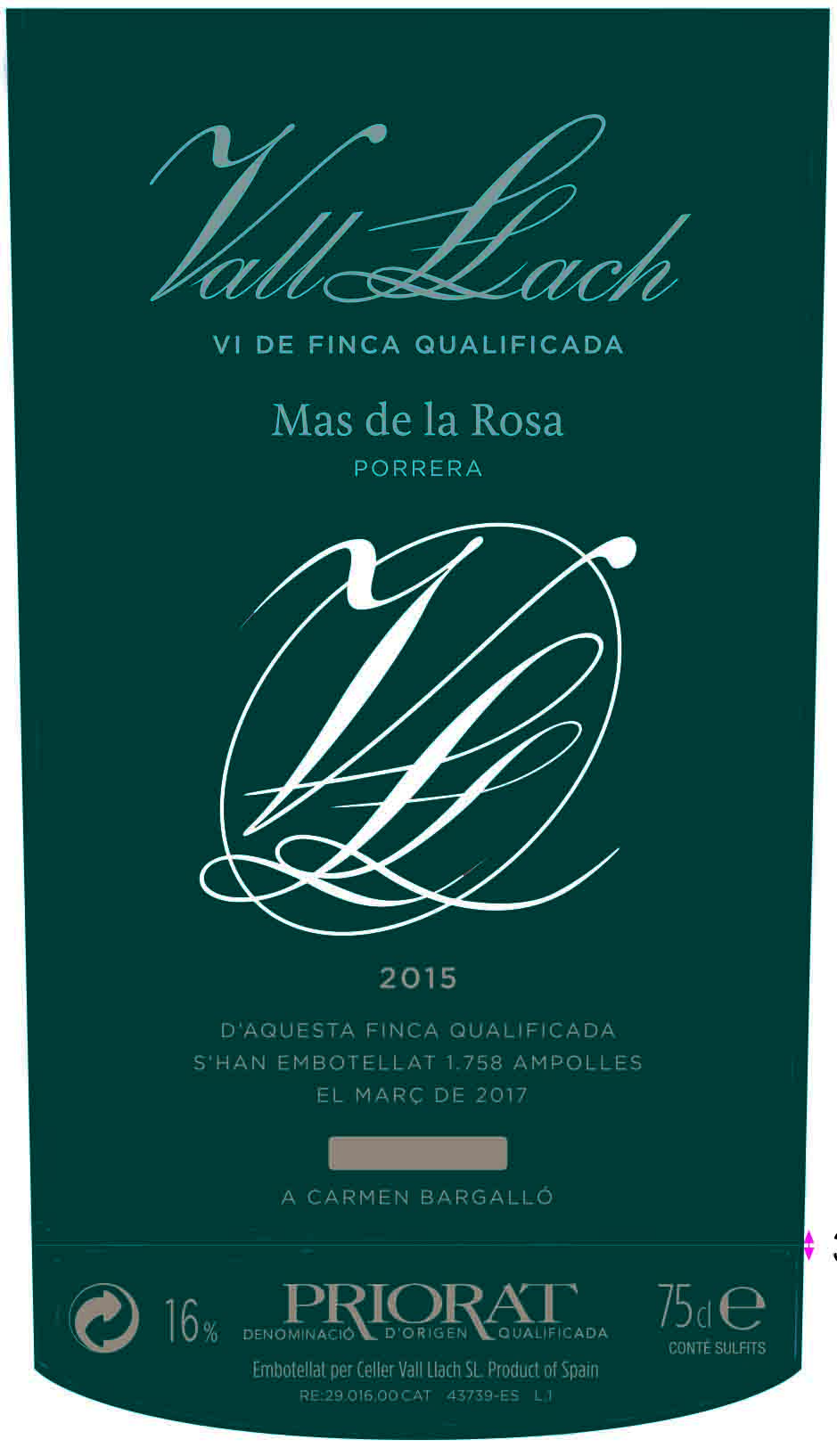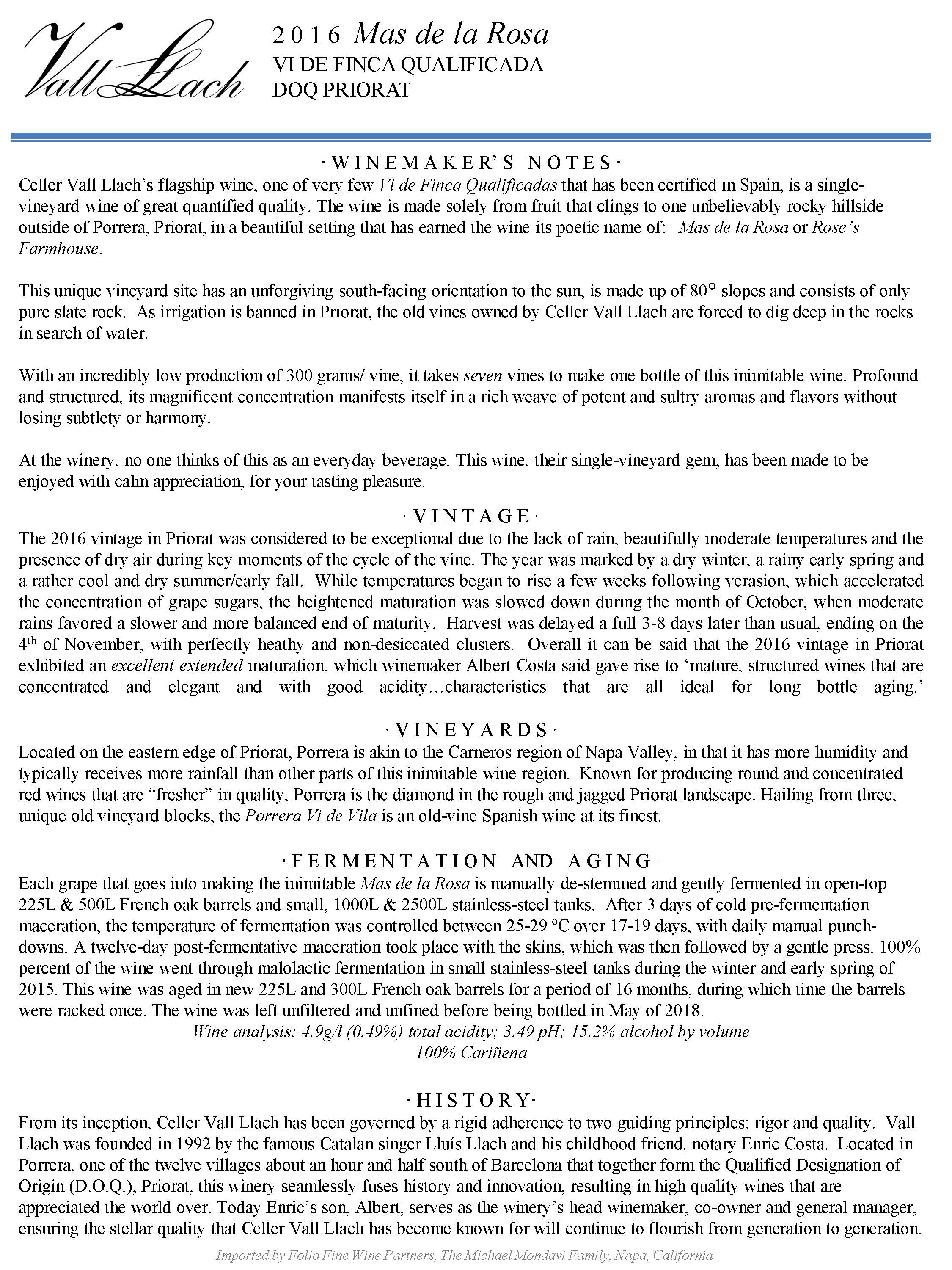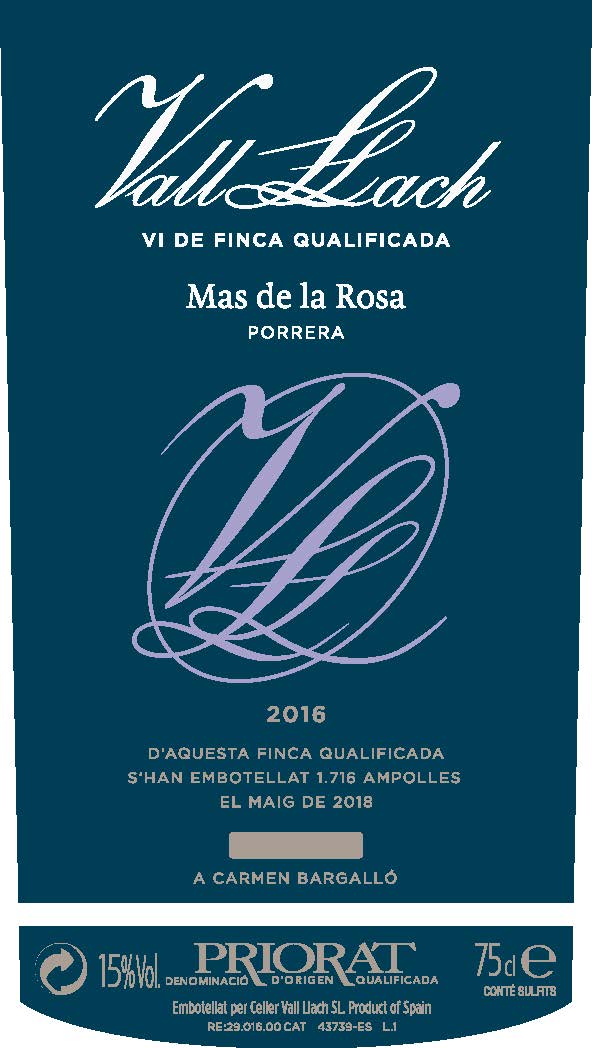



Vall Llach Vi De Finca Mas de la Rosa
Vi de Finca Qualificada DOQ Priorat, Spain
Tasting Notes
The wealth of natural light along with the climate and a terrain covered with a type of slate locally called, "llicorella", gives the fruit a singular balance and particular characteristics which allow us to make our most exclusive wine.
Winemaking Notes
Fermentation of de-stemmed grapes in 300 liter wooden barrels with spontaneous yeasts. 3 days of cold pre-fermentation maceration, 17-19 days of fermentation at a temperature limited to between 77° and 82°F with daily pigeage and gentle remontage.
The wine was transferred to 300 lit re barrels of light- and medium-toast finegrained new French oak. The wine was moved once during the ageing period of 14 months.
Vineyard Notes
Mas de la Rosa is a spectacular zone that holds one of the most singular properties of our cellar. It was planted with Carignan between 1910 and 1930 and sits at more than 500 meters (1,650 feet) of altitude, at an inclination of 70%.
A vineyard with more than 100 years of history. Every vine contains within it the sacrifice of those people who worked this vineyard throughout history and during situations of extreme difficulty. This south-facing vineyards exposed to great deal of sun. This wealth of natural light along with the climate and a terrain covered with a type of slate locally called, "llicorella", gives the fruit a singular balance and particular characteristics which allow us to make our most exclusive wine.
Technical Info
Varietal:100% Cariñena
RS: 0.8g/l
Alcohol: 15.5%
Tasting Notes
Profound and structured, this wine's magnificent concentration manifests itself in a rich weave of potent and sultry aromas and flavors without losing subtlety or harmony.
Winemaking Notes
Each grape that goes into making the inimitable Mas de la Rosa is manually de-stemmed and gently fermented in open-top 300 liter French oak barrels. The temperature of fermentation is controlled between 25-29ºC over 15 days, with daily manual punch-downs. A post-fermentative maceration with the skins took between 2-5 days, which was then followed by a soft press. 100% percent of the wine then went through malolactic fermentation in the same open-top barrels. Upon completion of the malolactic fermentation, the finished wine was transferred to closed, lay-down barrels for aging. It was aged in new 300L French oak barrels for a period of 14 months during which time the barrels were racked only once. The wine was left unfiltered and unfinedbefore at bottling.
Vineyard Notes
Mas de la Rosa is a unique vineyard site that has an unforgiving south-facing orientation to the sun, is made up of 80° slopes, and consists of only slate rock. As irrigation is banned in Priorat, the old vines owned by Celler Vall Llach are forced to dig deep in search of water, leading to an incredibly low production of 300 grams/vine. Thus, it takes seven vines to make one bottle of this inimitable wine.
Technical Info
100% Cariñena Total Acidity 4.9g/L, pH 3.49 Alcohol: 16%
Tasting Notes
Profound and structured, this wine's magnificent concentration manifests itself in a rich weave of potent and sultry aromas and flavors without losing subtlety or harmony.
Winemaking Notes
Each grape that goes into making the inimitable Mas de la Rosa is manually de-stemmed and gently fermented in open-top 300 liter French oak barrels. The temperature of fermentation is controlled between 25-29ºC over 15 days, with daily manual punch-downs. A post-fermentative maceration with the skins took between 2-5 days, which was then followed by a soft press. 100% percent of the wine then went through malolactic fermentation in the same open-top barrels. Upon completion of the malolactic fermentation, the finished wine was transferred to closed, lay-down barrels for aging. It was aged in new 300L French oak barrels for a period of 14 months during which time the barrels were racked only once. The wine was left unfiltered and unfinedbefore at bottling.
Vineyard Notes
Mas de la Rosa is a unique vineyard site that has an unforgiving south-facing orientation to the sun, is made up of 80° slopes, and consists of only slate rock. As irrigation is banned in Priorat, the old vines owned by Celler Vall Llach are forced to dig deep in search of water, leading to an incredibly low production of 300 grams/vine. Thus, it takes seven vines to make one bottle of this inimitable wine.
Technical Info
100% Cariñena Total Acidity 4.9g/L, pH 3.49 Alcohol: 16%
Tasting Notes
Profound and structured, this wine's magnificent concentration manifests itself in a rich weave of potent and sultry aromas and flavors without losing subtlety or harmony.
Winemaking Notes
Each grape that goes into making the inimitable Mas de la Rosa is manually de-stemmed and gently fermented in open-top 300 liter French oak barrels. The temperature of fermentation is controlled between 25-29ºC over 15 days, with daily manual punch-downs. A post-fermentative maceration with the skins took between 2-5 days, which was then followed by a soft press. 100% percent of the wine then went through malolactic fermentation in the same open-top barrels. Upon completion of the malolactic fermentation, the finished wine was transferred to closed, lay-down barrels for aging. It was aged in new 300L French oak barrels for a period of 14 months during which time the barrels were racked only once. The wine was left unfiltered and unfinedbefore at bottling.
Vineyard Notes
Mas de la Rosa is a unique vineyard site that has an unforgiving south-facing orientation to the sun, is made up of 80° slopes, and consists of only slate rock. As irrigation is banned in Priorat, the old vines owned by Celler Vall Llach are forced to dig deep in search of water, leading to an incredibly low production of 300 grams/vine. Thus, it takes seven vines to make one bottle of this inimitable wine.
 Back To Menu
Back To Menu

